Introduction
In the rapidly evolving landscape of cloud computing, the choice between AWS and Azure can significantly impact an organization's operational efficiency, data management, and overall IT strategy. Both platforms offer a suite of robust services, yet they differ markedly in architecture, service offerings, and integration capabilities. This article delves into a detailed comparison of AWS and Azure across compute, storage, networking, security, compliance, and pricing, providing a comprehensive guide to help businesses navigate their cloud journey.
By examining the unique strengths and ideal use cases for each platform, organizations can make informed decisions tailored to their specific needs and regulatory environments.
Compute Services Comparison
"AWS and a cloud platform both provide strong computing solutions, yet they vary considerably in structure and offerings.". AWS's Elastic Compute Cloud (EC2) is a cornerstone for scalable computing resources, allowing users to rent virtual servers with various configurations. With a market share of 33%, AWS has a wide range of instance types, catering to diverse business needs. Conversely, the platform offers Virtual Machines that integrate seamlessly with other services like App Services and Functions, which facilitate serverless computing. The cloud provider's compute offerings are closely tied to its hybrid cloud capabilities, making it a strong contender for organizations seeking a blend of on-premises and cloud solutions. This integration is particularly useful for businesses with regulatory or data residency requirements. The cloud service entered the market later in 2010 but has successfully captured 13% of the market share. Both platforms offer a pay-as-you-go pricing model, which allows for flexibility and cost-efficiency. However, the selection between AWS and another cloud provider often depends on particular business requirements, with AWS providing a broader variety of services, while the other platform excels in hybrid cloud environments.
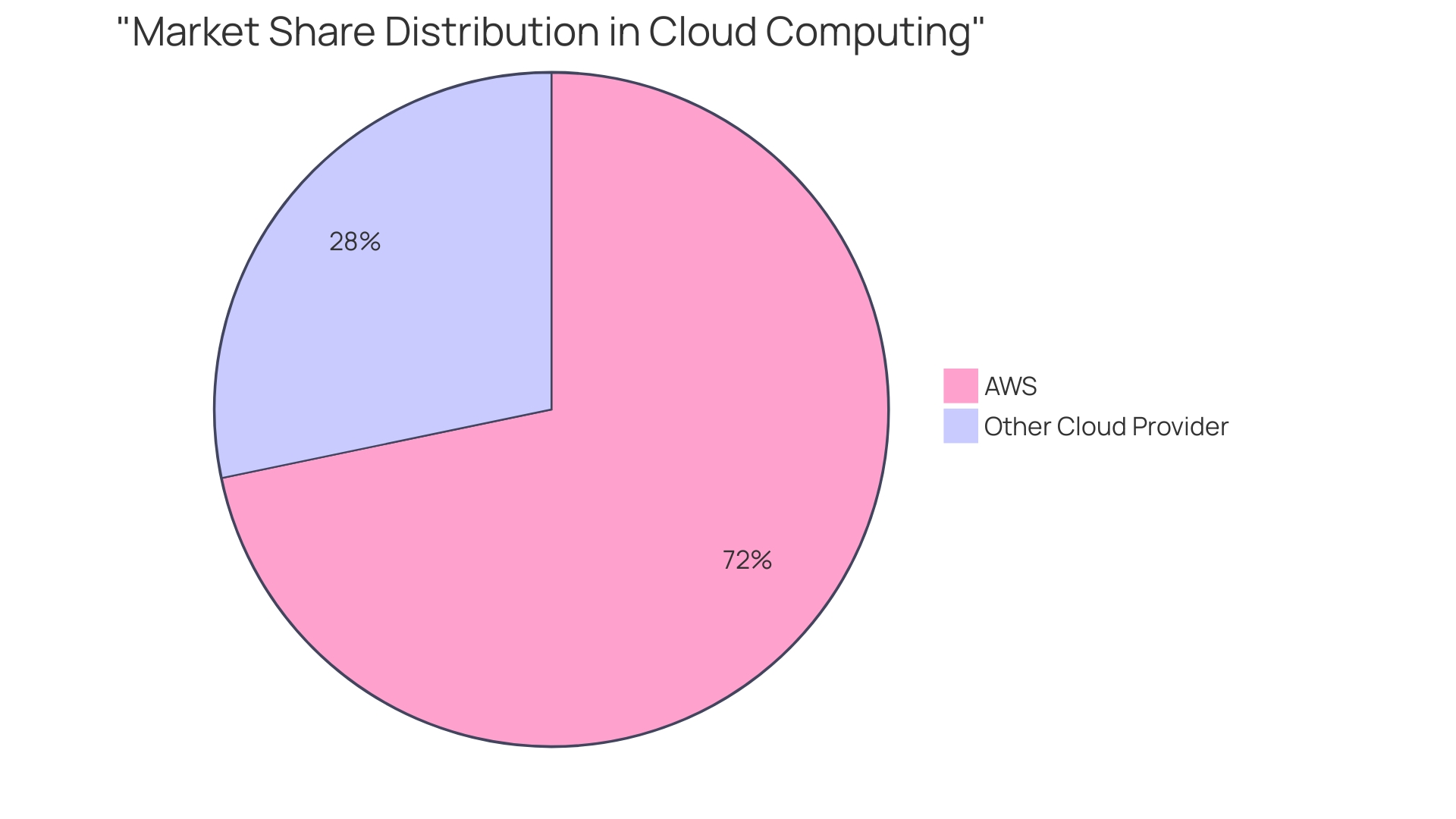
Storage Services Comparison
AWS offers a robust suite of storage options, including S3 (Simple Storage Service) for object storage, EBS (Elastic Block Store) for block storage, and Glacier for long-term archiving. S3, in particular, is well-regarded for its scalability and performance capabilities, enabling enterprises to efficiently store and retrieve vast amounts of data. The architecture of S3, which separates storage and compute, allows for effortless autoscaling, an essential feature for dynamic workloads. This separation enables the rapid scaling of resources based on usage patterns, a critical need highlighted by leading technology firms.
The platform, on the other hand, offers Blob Storage for unstructured data, Files for managed file shares, and Disk Storage. Blob Storage excels in integration with Microsoft offerings and supports hybrid scenarios, making it a preferred option for organizations heavily invested in the Microsoft ecosystem. The flexibility of the cloud provider's storage solutions ensures seamless data management and accessibility across various platforms.
AWS continues to dominate the cloud market, holding approximately 32% of the total market share as of the second quarter of 2023. This leadership position underscores the trust placed in AWS by numerous sectors, including entertainment, government, and enterprise IT, for their data storage needs. The consistent innovation and reliability of AWS's storage offerings, particularly S3, make it a favored choice for secure and scalable data solutions.
Networking Services Comparison
AWS introduces the Virtual Private Cloud (VPC) to create isolated networks, complemented by Direct Connect for dedicated network connections. The equivalent of this cloud service is the Virtual Network (VNet), which provides comparable functionalities, improved by ExpressRoute for private connections. AWS stands out with a more mature global networking offering, particularly through services like CloudFront for content delivery. The platform's strength lies in its seamless integration with on-premises networks, making it an attractive choice for organizations with existing Microsoft infrastructure. 'According to William Collins, a principal cloud architect at Alkira, enterprises are increasingly looking to modernize their network infrastructure, and both AWS and another major cloud provider offer robust solutions to meet these needs.'. This alignment with organizational architecture goals underscores the importance of choosing the right network service provider.
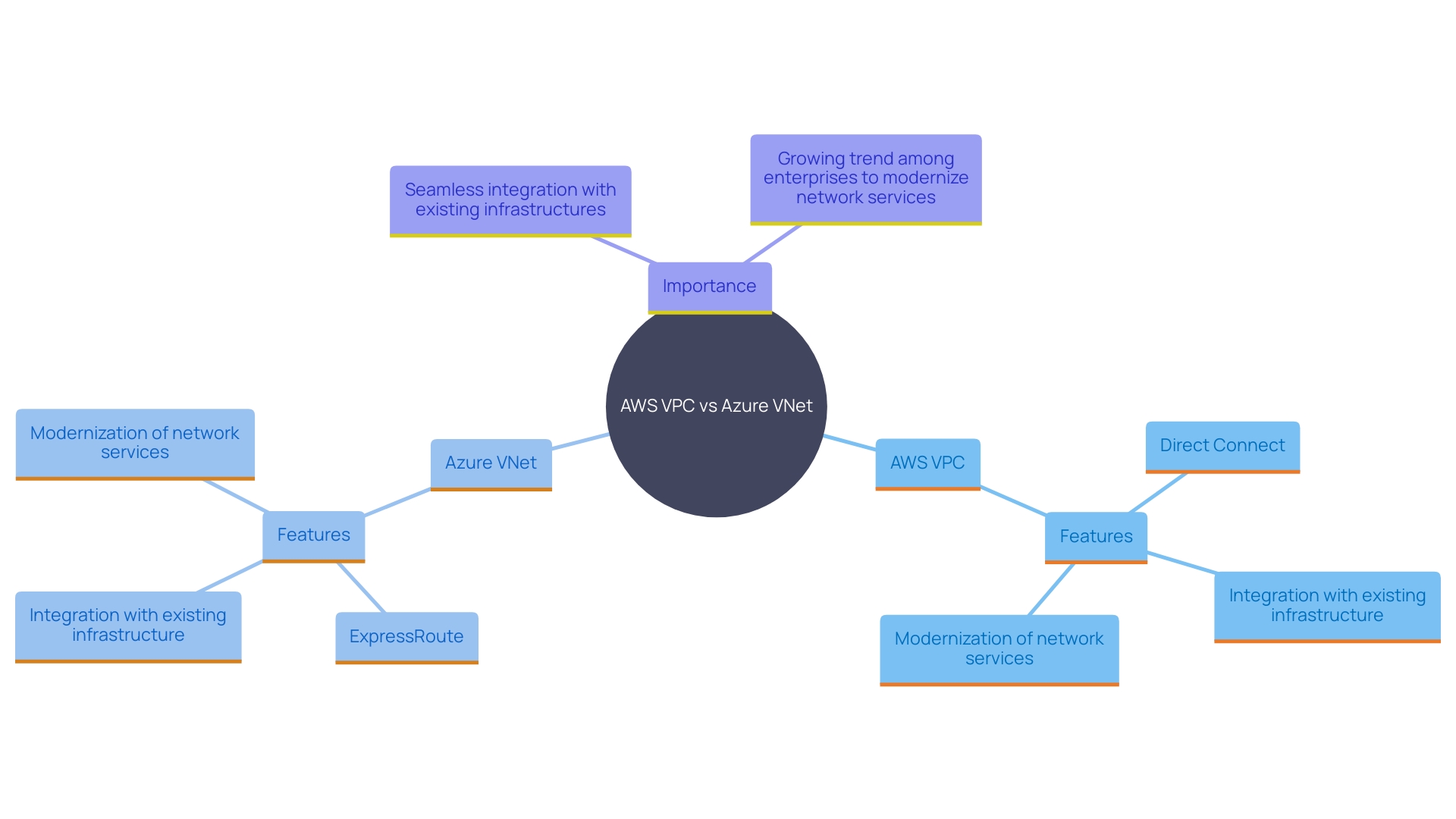
Security and Compliance Comparison
Security is a critical concern for both AWS and its competitor, but they take distinct approaches. AWS operates under a shared responsibility model, clearly delineating the security tasks between the provider and the customer. AWS takes charge of securing the cloud infrastructure, including hardware, software, networks, and databases. Regular updates and training are provided, but it is up to the customer to implement these measures. AWS offers comprehensive tools like IAM (Identity and Access Management) and GuardDuty for threat detection, which are essential for managing security in the cloud.
This platform, on the other hand, integrates deeply with Microsoft’s extensive array of security tools, such as Azure Security Center and Azure Sentinel. These tools provide robust security management and threat detection capabilities, making them particularly appealing for enterprises heavily invested in Windows environments. The platform also follows a shared responsibility model but leverages Microsoft's substantial investment in security research and innovation to enhance its offerings.
Both platforms adhere to major regulatory standards, ensuring compliance for businesses operating in highly regulated industries. However, the platform's seamless integration with Microsoft's ecosystem often makes it the preferred choice for organizations prioritizing a Windows-centric infrastructure.
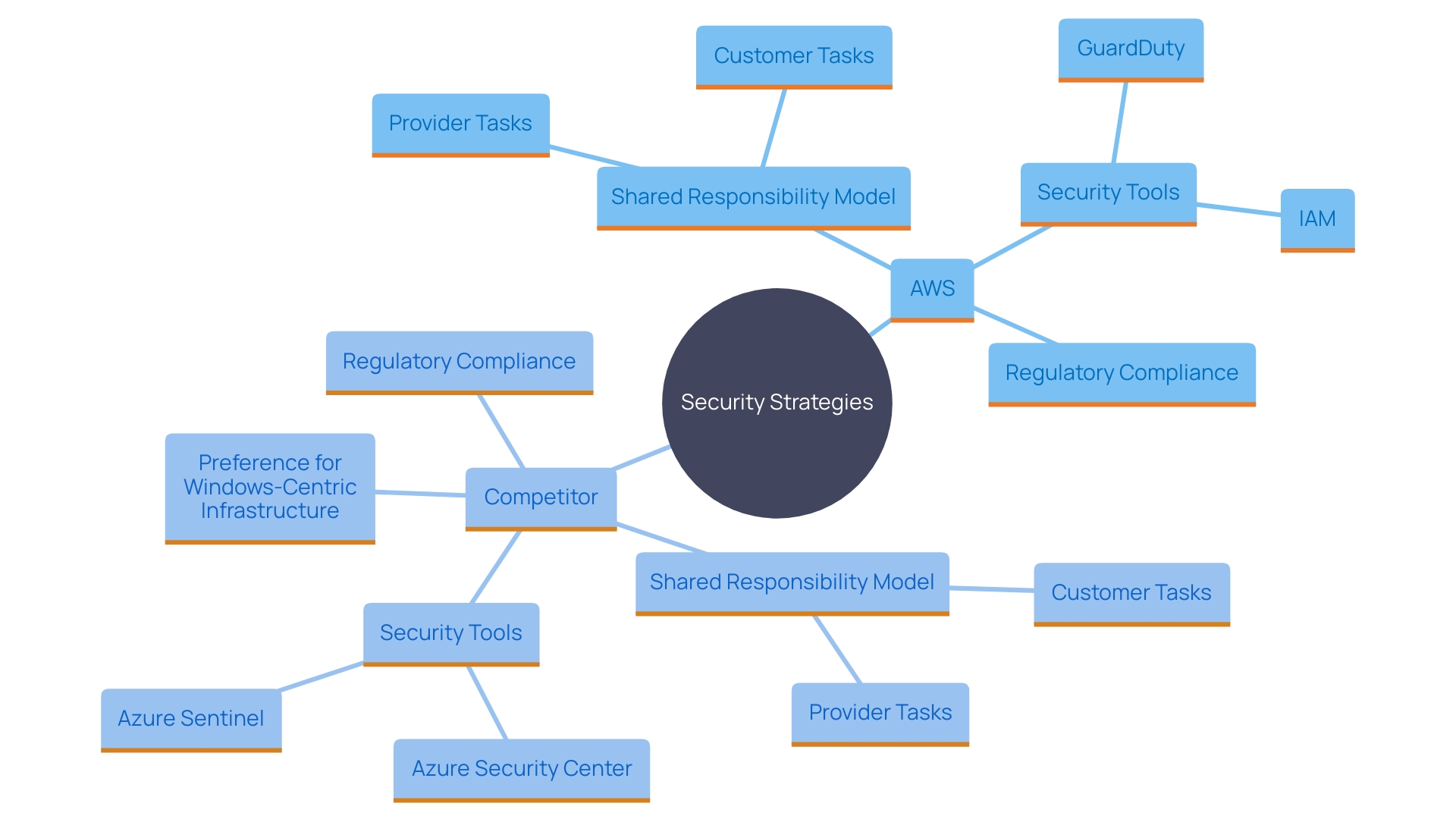
Pricing and Cost Comparison
Pricing structures between AWS and another cloud provider are intricate and hinge on usage patterns. AWS predominantly employs a pay-as-you-go model, fostering flexibility and scalability. Azure, while offering a similar model, also includes various subscription options that can be more economical for long-term commitments. Understanding the distinction between list price and contracted/custom price is crucial. 'List price functions as the starting rate for services, including basic discounts, while contracted/custom prices are customized for particular entities, incorporating negotiated discounts and credits.'.
For instance, AWS's pay-as-you-go pricing allows enterprises to leverage the most up-to-date hardware, maintaining cost-efficiency by only paying for what they use. This model is particularly beneficial for entities with fluctuating workloads, as it provides the ability to scale resources up or down based on demand. However, a learning curve exists when transitioning to cloud services, especially for entities accustomed to on-premise solutions with dedicated hardware or specific regulatory requirements.
The subscription options available offer an alternative for enterprises seeking predictable costs. These plans can be beneficial for businesses with stable, long-term workloads, offering potential savings through committed use discounts. The decision between AWS and Azure often boils down to a careful analysis of anticipated usage patterns and workloads to determine the most cost-effective solution. As industry analyst Roy Illsley observes, the selection of cloud solution can greatly influence a company's IT operations efficiency and total spending.
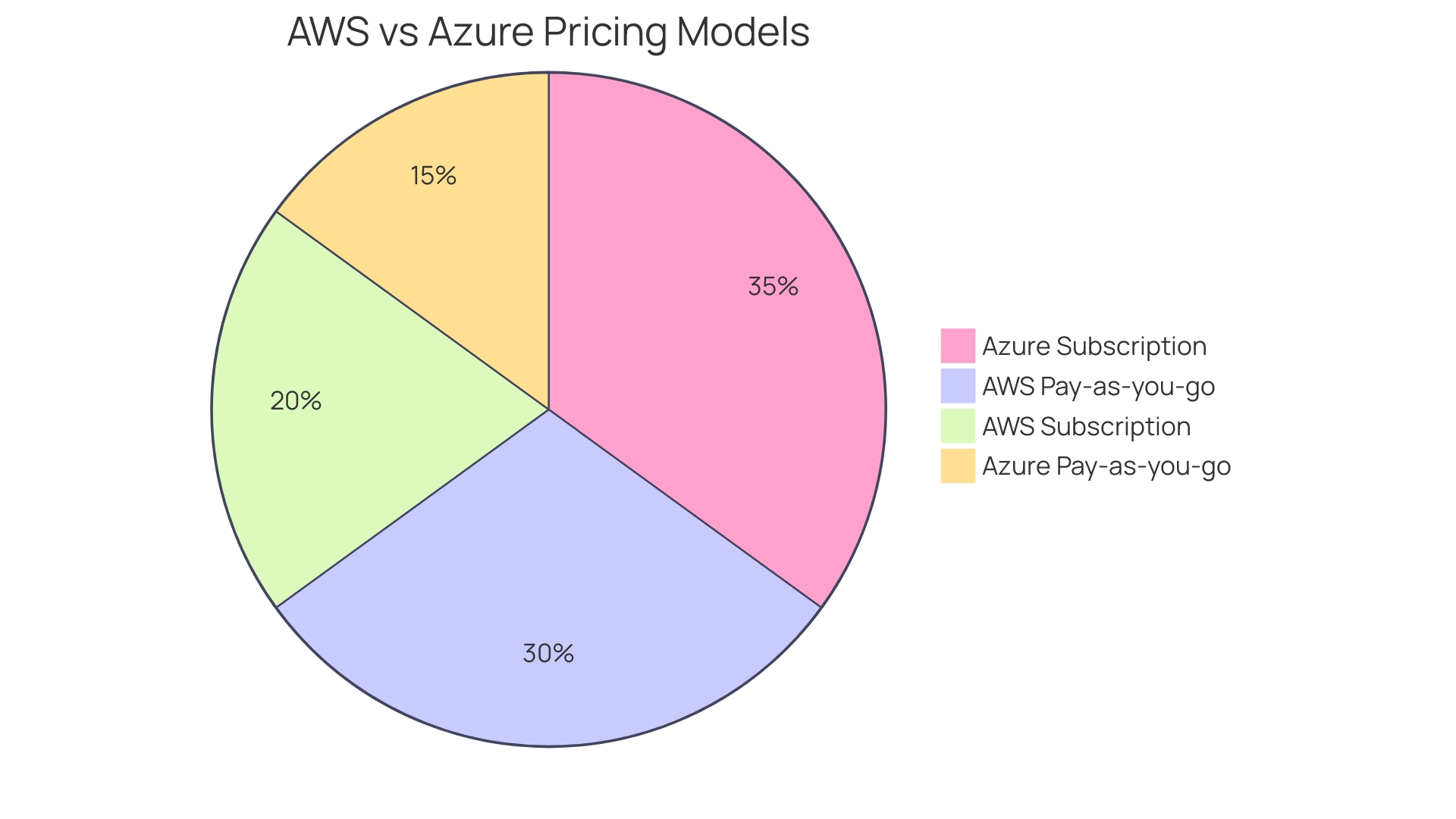
Use Cases and Ideal Scenarios for Each Platform
'AWS is a popular option for startups and organizations looking for a wide variety of offerings and a global presence.'. It excels in web hosting, big data applications, and machine learning workloads, as evidenced by its adoption at BMW Group for projects like Jupyter Managed. This service aids engineers and data scientists in analytics and machine learning, highlighting AWS's capacity to support advanced technological initiatives.
In contrast, this platform is tailored for enterprises with significant investments in Microsoft products. It offers seamless integration with on-premises systems, making it ideal for hybrid cloud scenarios. The robust compliance and security features of the platform are especially attractive to entities with strict regulatory obligations. For example, financial institutions in the European Union leverage Azure to balance technological innovation with compliance and security needs.
The debate between on-premises and cloud solutions is ongoing, but the cloud's scalability and pay-as-you-go pricing model have made it a compelling option. For many, the choice hinges on the specific needs of their applications and the regulatory landscape they operate within.
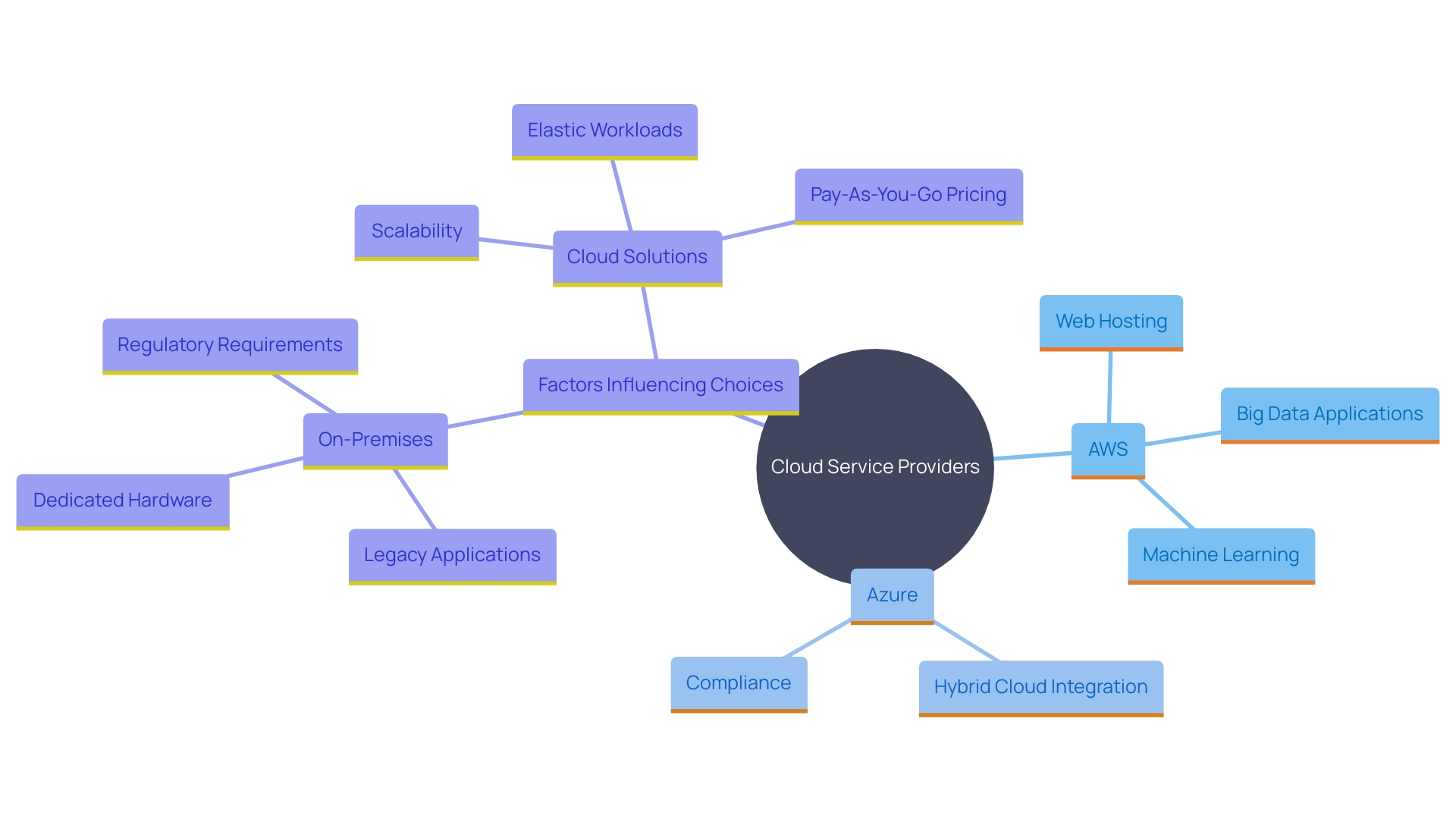
Conclusion
The comparison between AWS and Azure underscores the distinct strengths and capabilities of each platform, making them suited for different organizational needs. In terms of compute services, AWS offers a broader array of instance types, while Azure excels in hybrid cloud scenarios, appealing to businesses with existing Microsoft infrastructures.
When examining storage solutions, AWS's S3 stands out for its scalability and performance, whereas Azure's Blob Storage is favored for its integration with Microsoft services. Both platforms provide robust networking options, with AWS leading in global networking capabilities and Azure offering seamless integration with on-premises networks.
Security and compliance remain paramount for both AWS and Azure. Their shared responsibility models delineate the roles of provider and customer, with AWS focusing on a comprehensive suite of tools and Azure leveraging Microsoft's extensive security resources. Pricing strategies reveal nuanced differences, with AWS promoting flexibility through a pay-as-you-go model, while Azure offers subscription plans that may lead to cost savings for long-term commitments.
Ultimately, the choice between AWS and Azure should be guided by specific business requirements, regulatory considerations, and existing technological investments. Organizations must carefully evaluate their unique contexts to select the cloud service that aligns best with their operational goals and strategic vision.




